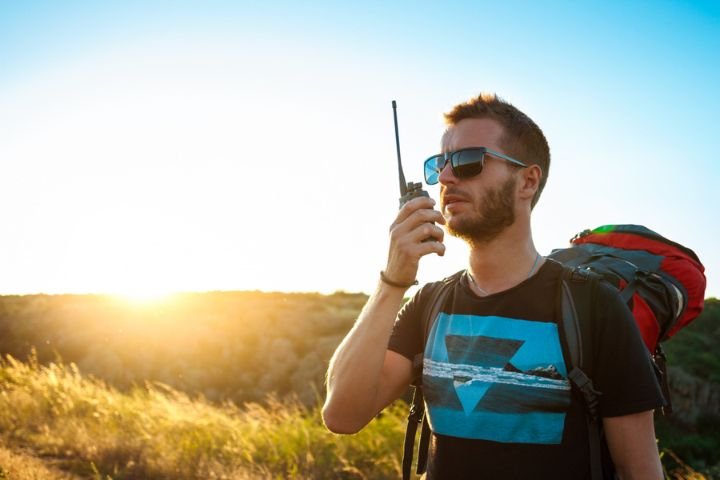When the trail eats your cell signal.
It always happens right when you need it most. You pull out your phone to check in with the rest of the group—zero bars. You wave it around like you’re trying to summon reception from the sky. Nothing.
If you spend enough time outdoors—hiking, camping, skiing, or exploring—you learn quickly that cell coverage is more of a suggestion than a guarantee. That’s when two-way radios stop being “nice to have” and start being essential gear.
Why Radios Still Rule the Backcountry
Unlike cell phones, two-way radios don’t rely on towers. They transmit directly between devices, which means you can still communicate even when you’re miles from the nearest road.
They’re also instant—no dialing, no dropped calls. Just press the button and speak. When you’re coordinating a campsite setup, navigating tricky terrain, or keeping tabs on a group spread out along a trail, that speed matters.
Range: The Reality Check
Manufacturers love to list impressive ranges on the box—10 miles! 20 miles! But here’s the truth: those numbers are under perfect conditions (think mountaintop to mountaintop).
In the real world, trees, rocks, and hills cut that range down. For open terrain or water, a long-range model is worth it. For dense forests or mountainous areas, look for units with strong signal penetration rather than focusing only on raw distance.
Battery Life: Your Lifeline in the Wild
Outdoors, your charging options are limited. A radio that dies halfway through the day is as useful as a brick.
Look for models with:
- Long runtime per charge—enough for a full day or more
- Swappable battery packs so you can carry spares
- Dual power options (rechargeable and disposable) for flexibility
Pro tip: keep spare batteries in a sealed bag to protect them from moisture.
Durability: Because Nature Doesn’t Care
Rainstorms, dust, accidental drops—they’re all part of the outdoor game. The best two-way radios for adventure are built to take it.
- Check for:
- Water resistance (IPX4 or higher for splashes; IPX7 for submersion)
- Dust protection if you’re in sandy or desert environments
- Rugged housing that won’t crack the first time it hits the ground
Channels and Privacy
- When you’re on public frequencies, other people can jump in—sometimes accidentally, sometimes not. Multiple channels let you switch quickly if you run into interference. Privacy codes filter out unwanted chatter, so you only hear your group.
While these don’t encrypt your conversation, they do make communication clearer and more organized.
Extra Features Worth Considering
Not all features are essential, but some can be game-changers for outdoor use:
- Weather alerts to warn of incoming storms
- Hands-free (VOX) mode for climbing or biking
- GPS tracking to keep tabs on group members
- Push-to-talk over cellular (PoC) for nationwide coverage when paired with mobile networks
Match the Radio to Your Adventure
The “best” radio depends on how and where you’ll use it:
- Hiking & Backpacking: Lightweight, long battery life, weatherproof
- Water Sports: Waterproofing and floating capability
- Off-Roading: Strong signal penetration and vehicle mounting options
- Hunting: Quiet operation and camo finishes
Think about your specific environment before you buy—what works on a sunny lake might not cut it in a snowy forest.
The Takeaway
Outdoor adventures are better when you can stay connected—and safer, too. The right two-way radios give you instant, reliable communication no matter how far off the grid you roam.
Because when the cell signal disappears, you’ll be glad you packed the gear that doesn’t.
Also Read: Jambo Technology: JamboPhone and Web3 as a Force in Emerging Markets

